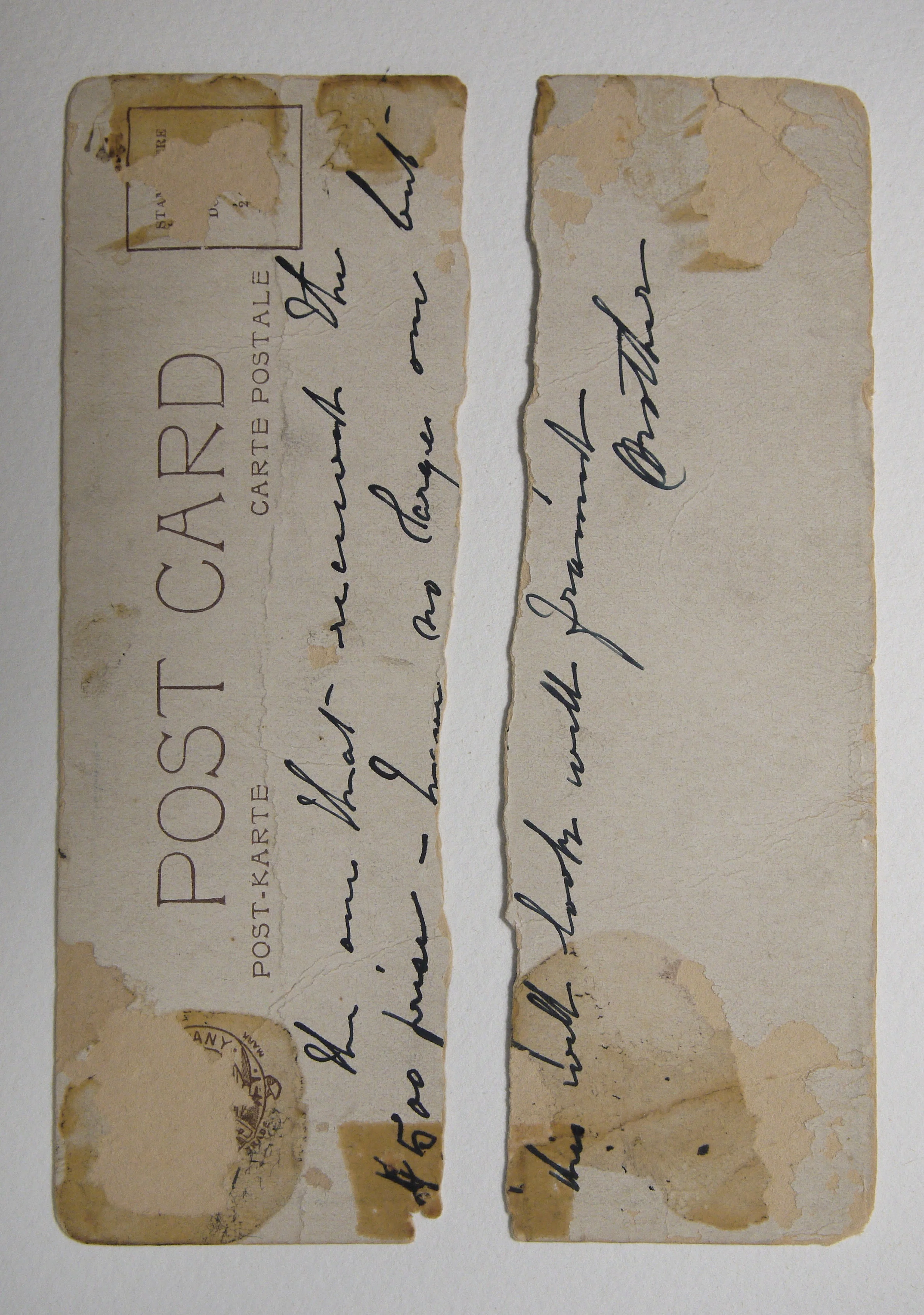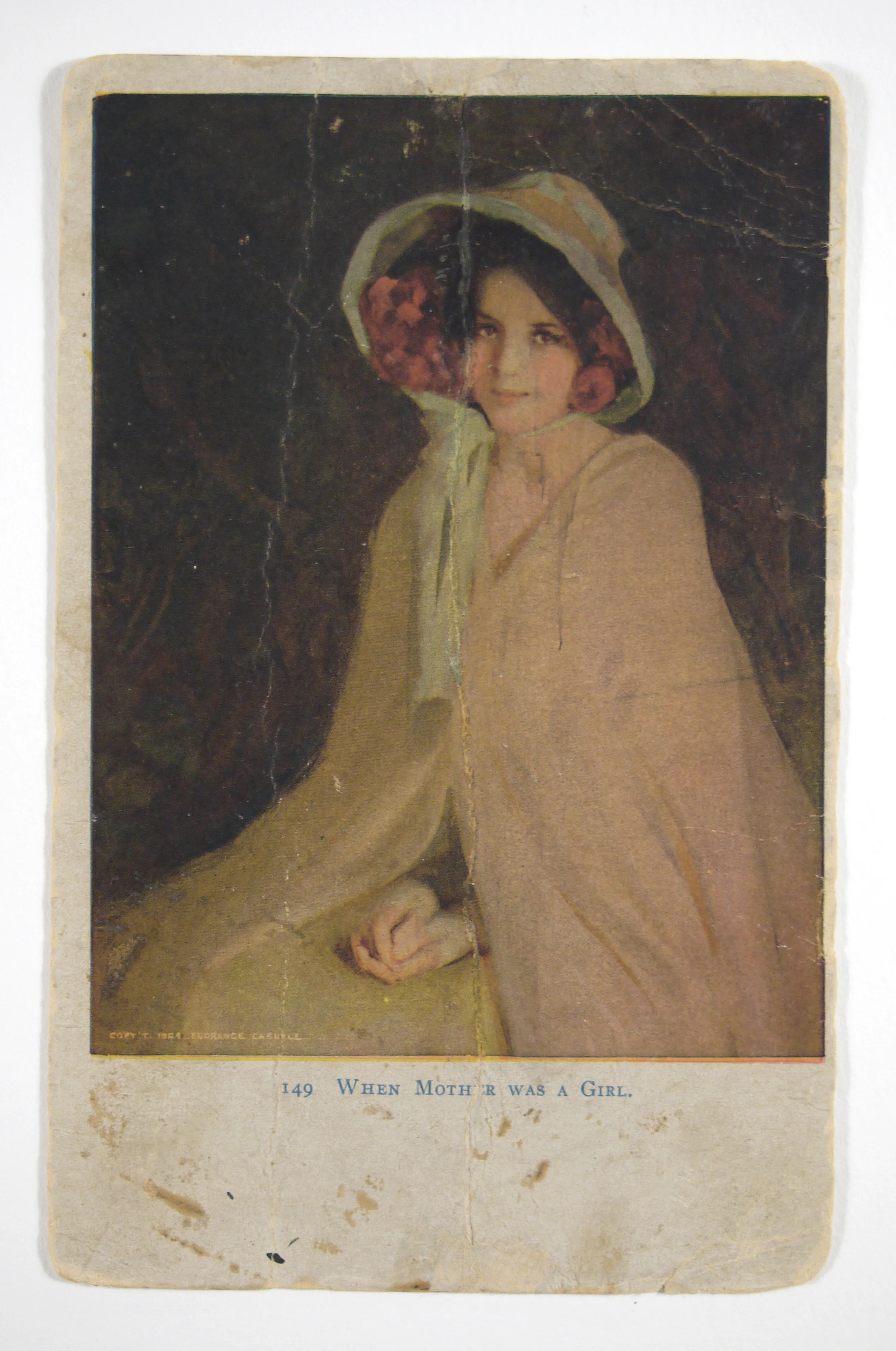Florence Carlyle (1864-1923) was a Canadian artist who worked in Woodstock, Ontario in the late 19th and early 20th century. After studying in Paris in her mid-twenties, she returned to Canada to build a successful career as a figure and portrait painter, and was an associate member of the Royal Canadian Academy of Arts and a member of the Ontario Society of Artists.
She is a celebrated figure in Woodstock, Ontario, and is the subject of an exhibition on now at the Woodstock Art Gallery; the show displays many of her artworks and tells the story of her rise to success.
Recently Book and Paper Conservation Services conserved a rare postcard showing a lost painting of Carlyle's, which is now on display in the exhibition. The painting, entitled When Mother Was A Girl, won Carlyle the Osborne Calendar Competition and contributed to the early success of her career.
When Mother Was a Girl, postcard of a painting by Florence Carlyle.
Verso of postcard showing handwritten message.
The postcard had been torn in two with a jagged vertical break, as well as suffering losses and abrasions to the printed surface. It is not a valuable item on its own, but represents an important moment in the artist's career, and is made more significant by the fact that the current location of the painting is unknown.
Carlyle postcard, after repair and before inpainting of losses.
The two halves of the artwork were reunited and repaired with Japanese tissue and wheat starch paste. The losses to the printed surface were inpainted to match the surrounding image.
After conservation treatment, the postcard is once again whole, and the viewer can appreciate the image properly without the distraction of the damage and abrasions. Although it is small, we can get some sense of what the winning painting must have been like in person.
Florence Carlyle postcard after conservation treatment.
Verso of the postcard after conservation treatment.
The exhibition Miss Carlyle's Success runs at the Woodstock Art Gallery from October 14, 2016 - September 16, 2017.
If you have archival materials that could benefit from conservation treatment, don't hesitate to get in touch with us. There is no charge for estimates, and we provide a range of treatment options where possible. Check out our portfolio page to see other successful conservation projects.

















